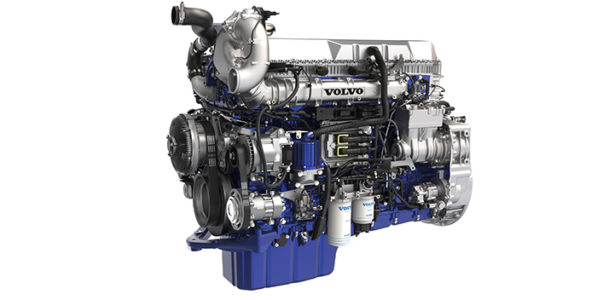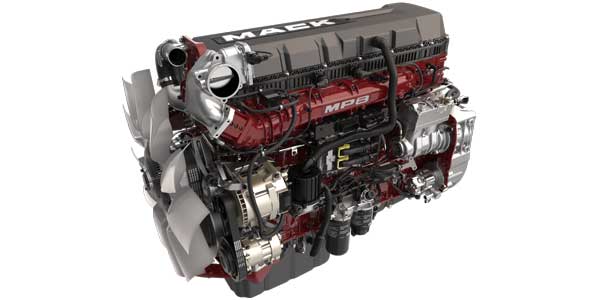Engines have become more efficient over the past few years, and yet engine manufacturers are still finding ways to squeeze additional efficiency out of their diesel powerhouses. As an example, for model year 2017, Volvo Trucks North America added a turbo compounding option for its D13 engine, and Mack Trucks also began to offer turbo compounding for its 445-HP MP8 engine.
So what is turbo compounding, and where do those fuel efficiency gains come from?
“The physical function of turbo compounding is basically to recapture the heat that you’re getting from the exhaust and to recirculate it and put it directly back into the drivetrain,” explained Jason Spence, Volvo Trucks’ product marketing manager for long-haul. “It has a secondary turbo that the gases flow through, and that turbo works through a viscous couple, similar to a torque converter in an automatic transmission. So it’s utilizing heat that would basically be wasted otherwise.
“This allows the engine to generate maximum torque [1850 ft./lbs.] starting at 900 RPMs,” Spence continued. “The torque curve for Volvo has been traditionally flat—up to a certain RPM, you get all the torque available. But in this case, it’s going to start that curve at a lower RPM, and that’s really where you get the full efficiency gain: Your engine isn’t spinning as fast, so you’re not burning as much fuel and you already have the torque that you need to pull the load.”
In other words, the turbo compounding process lowers the floor on the RPMs needed to achieve maximum torque. And running the engine more slowly is vital for realizing fuel economy gains.
“The slower the engine, the less fuel you’re burning and the quieter it is,” Spence said.
The extra power generated by turbo compounding can result in 6.5% fuel efficiency gains for Volvo’s D13 compared with the 2014 D13 engine, according to the company. The Volvo D13 with turbo compounding is available in two HP ratings—425 and 455— and average cruising RPMs with turbo compounding is 1,050, with a 2.47 rear axle ratio. Mack, meanwhile, estimates the efficiency generated by turbo compounding on its MP8 engine at 8% to 8.8% fuel economy improvement with as low as 900 RPM (with full torque). This is only available with Mack’s Super Econodyne downspeeding package.
For the moment, turbo compounding technology is primarily made for Class 8, on-highway trucks, and those are the trucks that will see the full extent of the benefits. But that’s not the only application it works for, and both Volvo and Mack spoke positively about the possibility of bringing this technology to other applications in the future.
“Turbo compounding performs the best when you’re at constant speeds and flat terrain. But really, in any application—highway, local delivery, regional-haul—it will provide an improvement over a non-turbo compound engine,” said Roy Horton, Mack Trucks’ director of product strategy.
John Moore, Volvo Trucks’ product marketing manager for powertrain, said that there are opportunities for improving this technology in the future, and for bringing it to additional applications. For example, he said, the system can work well in non-steady state applications, and there is potential to use it in day cabs and in urban applications.
“We also see benefits in heavy-haul applications, specifically in Canada where they allow the heavier weights,” Moore continued. “The turbo compound with I-Shift is rated at 155,000 lbs. GCWR when you use the adaptive gearing setup. Adaptive gearing basically will only allow the transmission to go into 11th gear when you’re loaded, which is direct drive providing efficiency and performance with higher engine RPM at speed. Returning back empty, the transmission will sense that the weight isn’t there and shift into overdrive, and they’ll come back much more efficiently at a low engine RPM.”
For fleets looking for every ounce of efficiency they can find, this will be a welcome savings. Spence said Volvo isn’t done, noting that the truck maker will continue to improve this technology and other fuel-saving options whenever possible.
“In the future, as greenhouse gas regulations become more and more stringent, our fuel efficiency needs to continue to improve,” Spence said. “Moving forward, our objective as a brand is to make sure that turbo compounding gets into as many engines as possible.”















